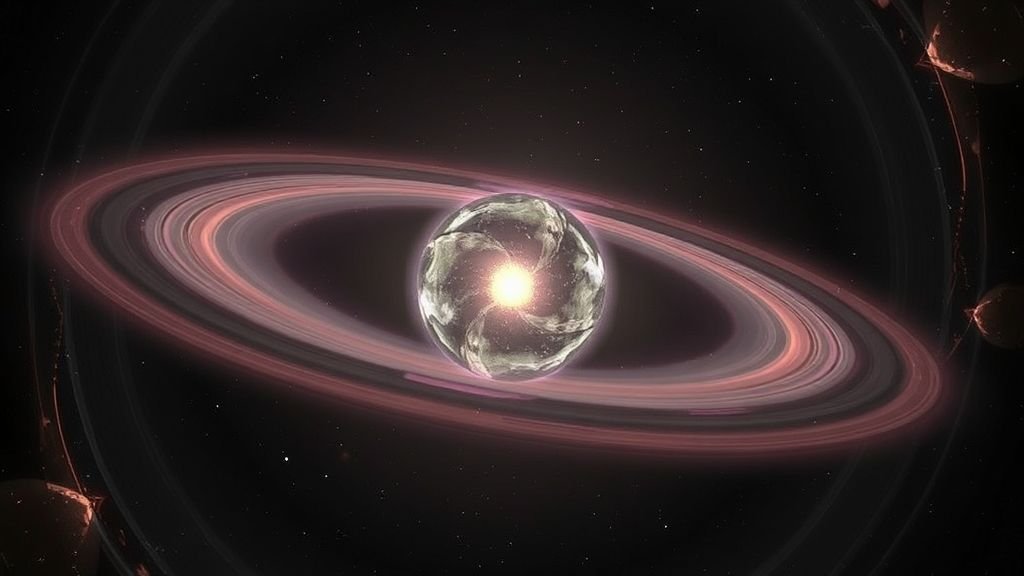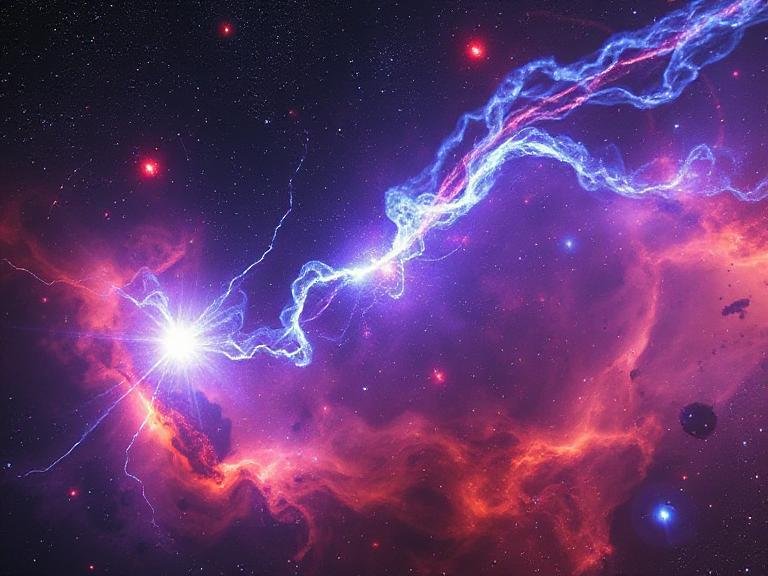
NASA’s James Webb Telescope Captures Historic View of Planet Forming Cosmic Rings
In a groundbreaking moment for astronomy, the James Webb Space Telescope (JWST) has potentially captured its first direct image of an exoplanet carving rings in space — a discovery that could transform our understanding of how planets form and evolve.
So far, astronomers have confirmed nearly 6,000 exoplanets beyond our solar system. But this new candidate — known as TWA 7 b — stands out. Located about 34 light-years away in the TW Hydrae association, it orbits a young red dwarf star called TWA 7 , which is only about 6.4 million years old.
What makes this object so special is not just its mass — roughly that of Saturn — but also its position: it appears to be sitting inside a gap in one of three dusty rings surrounding its host star. This matches precisely what scientists expect from a planet shaping its environment through gravitational influence.
📸 How Was It Discovered?
To capture this faint world, researchers used Webb’s Mid-Infrared Instrument (MIRI) along with a coronagraph , which blocks out the bright glare of the central star. By doing so, they were able to reveal details hidden in the surrounding debris disk.
After advanced image processing removed residual light, a distinct infrared glow appeared — exactly where simulations predicted a planet should be. The brightness, color, and orbital distance all align with expectations for a newly formed planet actively sculpting the dust around it.
Follow-up tests ruled out the possibility of it being a background star or a local solar system object. While a distant galaxy can’t be completely ruled out, current evidence strongly supports the conclusion: this is likely a real planet.
The findings were published on June 25, 2025 in Nature , under the title “Evidence for a sub-Jovian planet in the young TWA 7 disk.”
🌌 A New Chapter in Planetary Formation
TWA 7 b sits approximately 50 times farther from its star than Earth is from the Sun , placing it well within the star’s cold outer regions. Scientists estimate its temperature to be around 120°F (47°C) , making it a relatively cool, young world.
This discovery could mark the first time a planet has been directly imaged within a debris disk , offering strong observational support for theories about how planets shape their surroundings.
Moreover, if confirmed, it may provide the first hint of a “trojan disk” — a cloud of dust trapped in the planet’s orbit — opening up new avenues for research into planetary formation.
⚙️ What Makes This Discovery Unique?
The star TWA 7, also known as CE Antilae, is surrounded by three dusty rings. These kinds of disks are common around young stars and often show gaps or structures thought to be caused by forming planets. However, until now, no such planet had been directly observed within these gaps.
Thanks to Webb’s unmatched sensitivity in the mid-infrared range, astronomers were finally able to detect this faint signal. The data combines observations from MIRI onboard JWST and the SPHERE instrument on the European Southern Observatory’s Very Large Telescope (VLT).
🧪 What Comes Next?
While the discovery is promising, further observations are needed to confirm TWA 7 b’s planetary status and refine its properties. Future studies will focus on:
- Confirming its orbit and mass
- Analyzing its atmospheric composition
- Studying its interaction with the debris disk
These investigations will help scientists better understand how planets like this form and evolve over time — and how systems like our own solar system came to be.
🌠 Why This Matters
This finding highlights the James Webb Space Telescope’s power to detect low-mass planets around nearby stars — something previous instruments couldn’t do effectively. If TWA 7 b is confirmed, it will not only be Webb’s first directly imaged exoplanet , but also the lightest ever seen using direct imaging techniques .
As lead researcher Anne-Marie Lagrange put it:
“Our observations reveal a strong candidate for a planet shaping the structure of the TWA 7 debris disk, and its position is exactly where we expected to find a planet of this mass.”
And co-author Mathilde Malin added:
“This observatory enables us to capture images of planets with masses similar to those in the solar system, which represents an exciting step forward in our understanding of planetary systems, including our own.”
📌 About the Mission
The James Webb Space Telescope is the most powerful space-based observatory ever built. Led by NASA in partnership with the European Space Agency (ESA) and the Canadian Space Agency (CSA) , Webb is rewriting our understanding of the universe — from the birth of galaxies to the formation of planets like TWA 7 b.
This observation was part of Webb General Observer Program 3662 .
The discovery was detailed in a study titled “Evidence for a Sub-Jovian Planet in the Young TWA 7 Disk,” published on June 25, 2025 , in the prestigious journal Nature . The research was led by a team of international scientists including Anne-Marie Lagrange, Mathilde Malin, Anthony Boccaletti , and over 25 other contributors representing institutions across Europe and the United States.
You can read the full paper here:
🔗 Link





